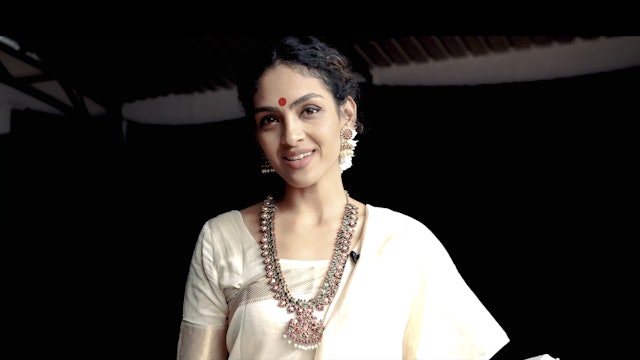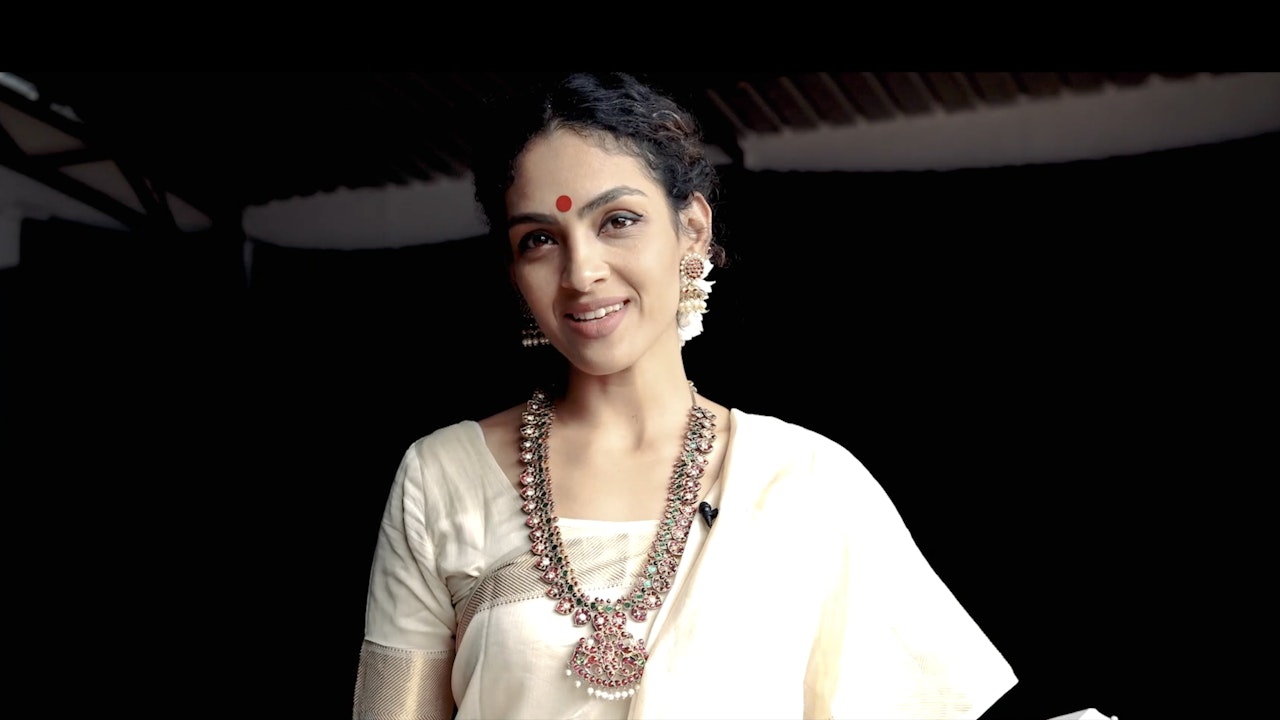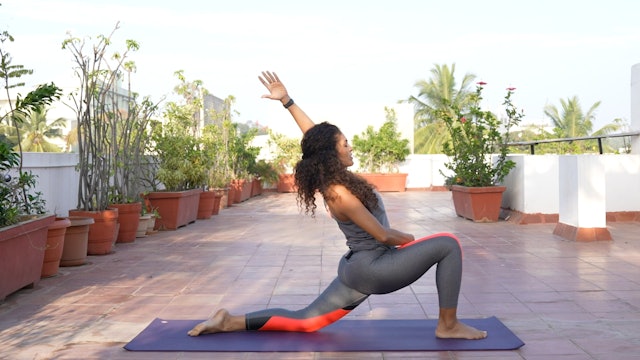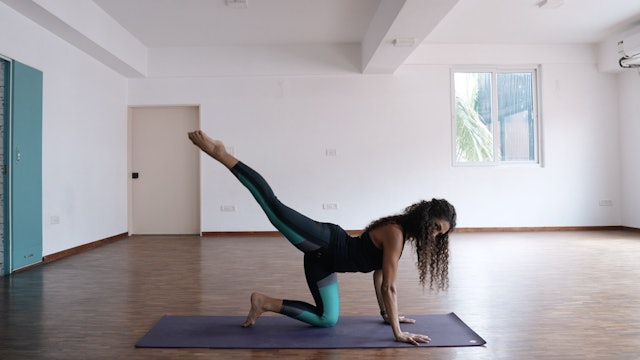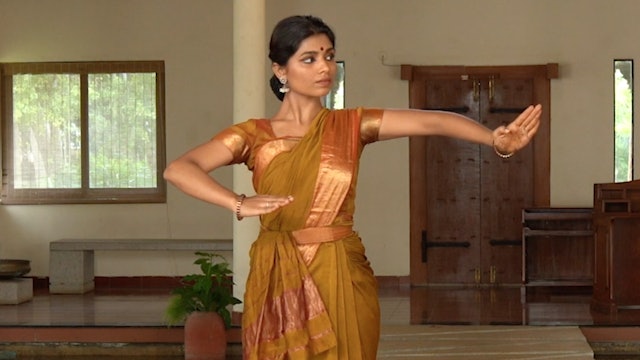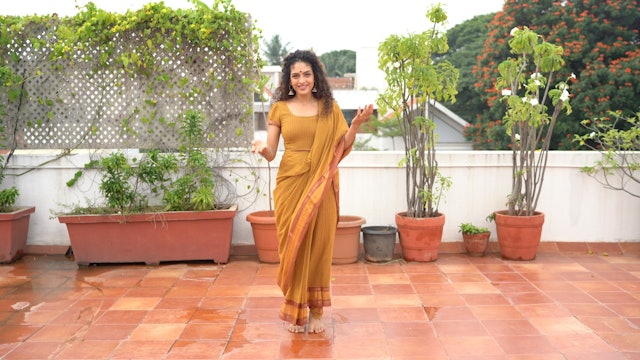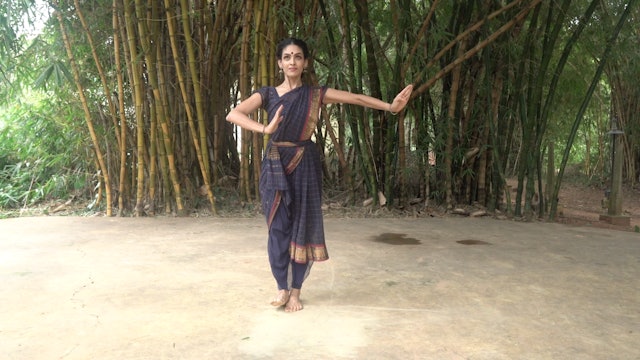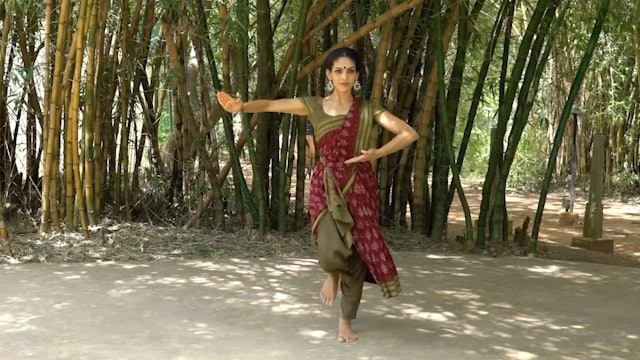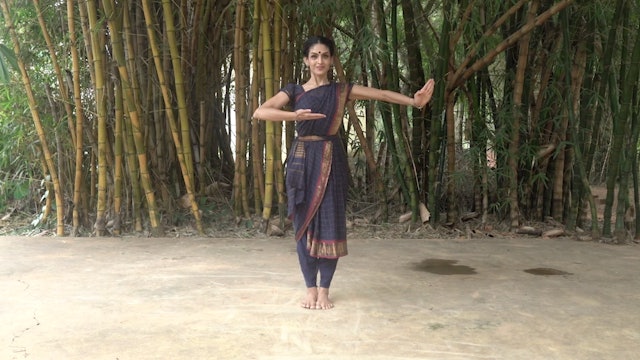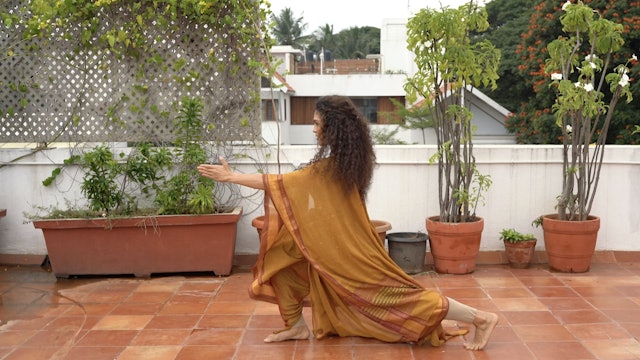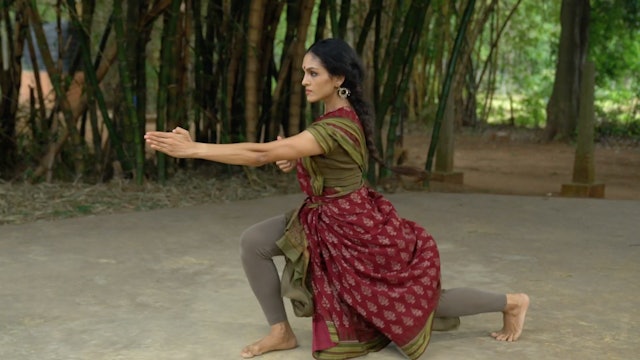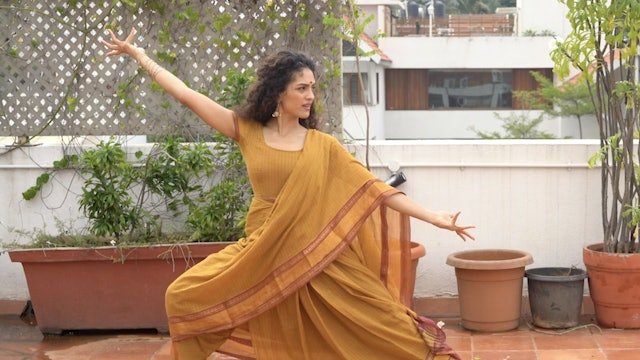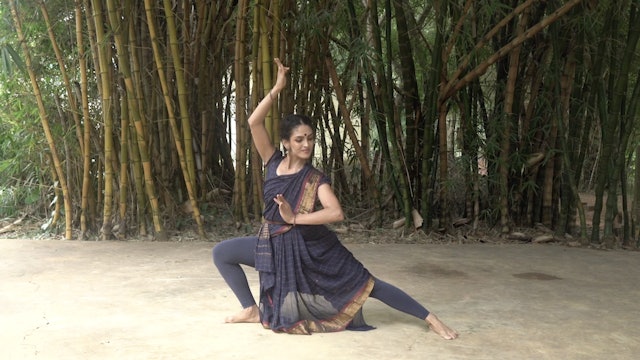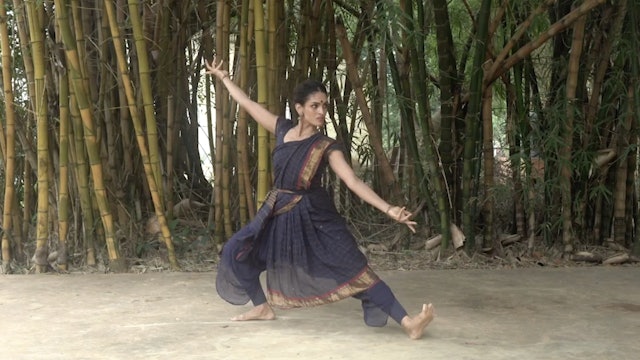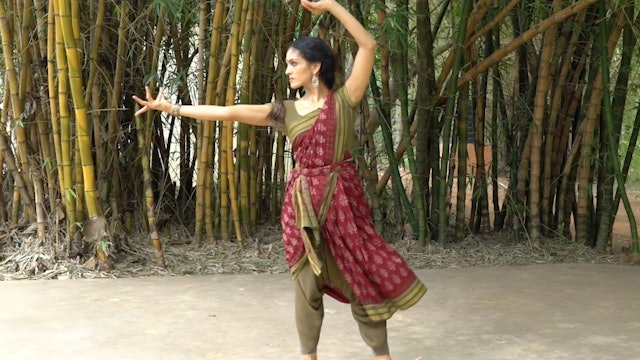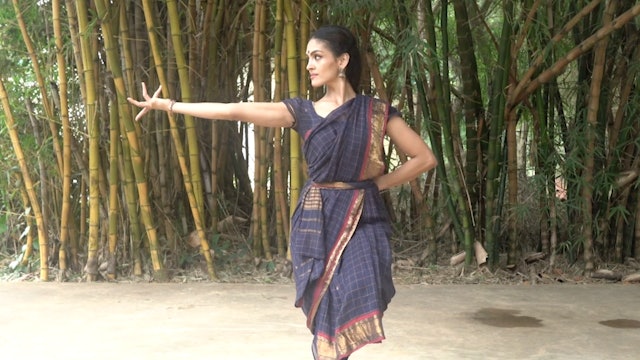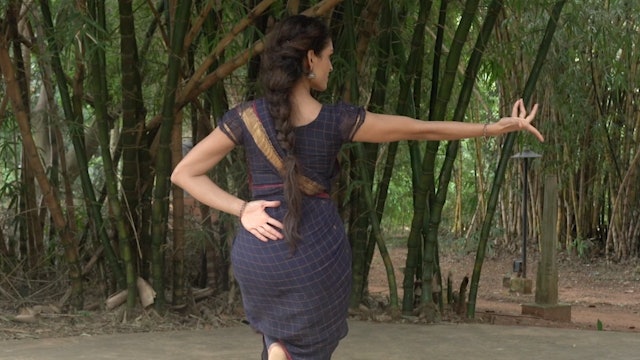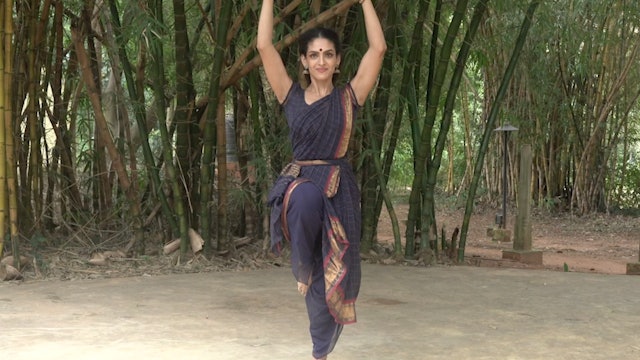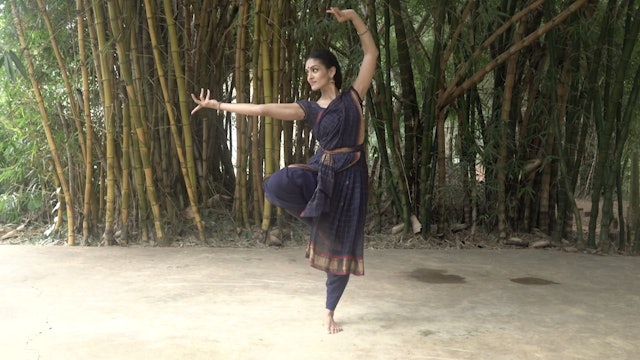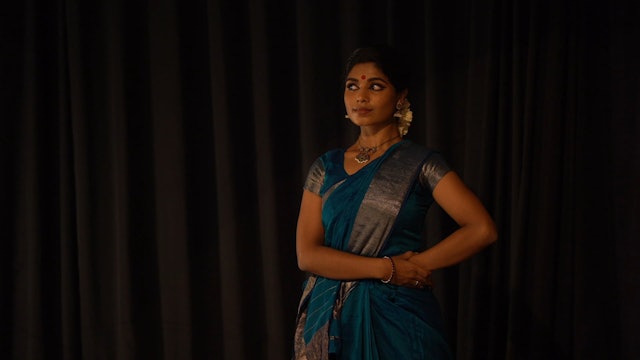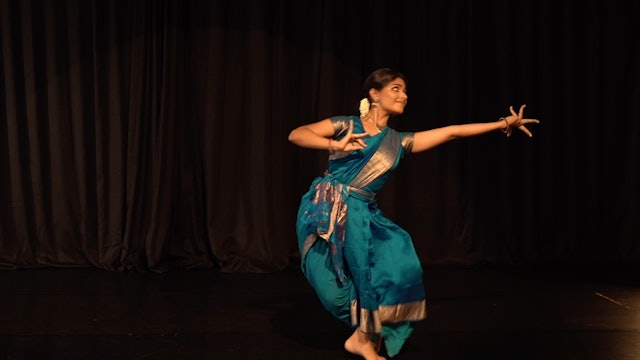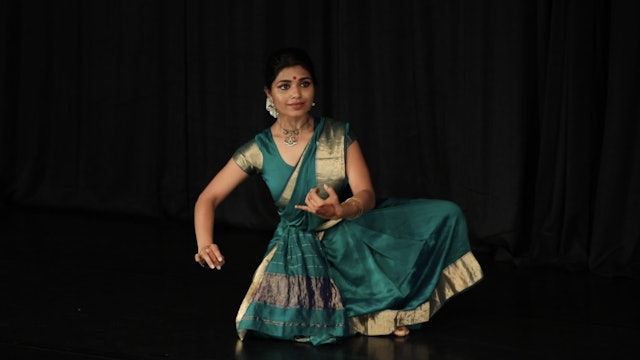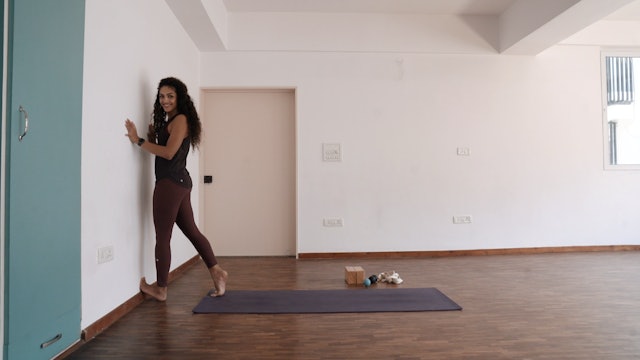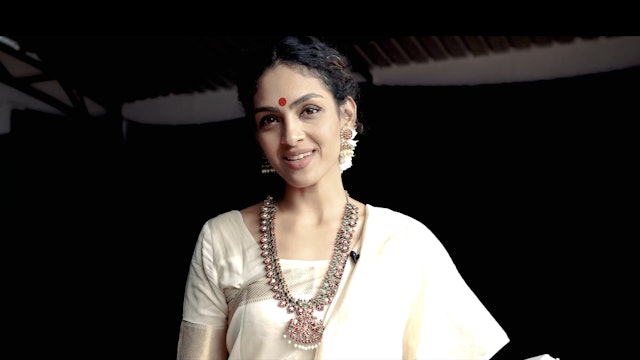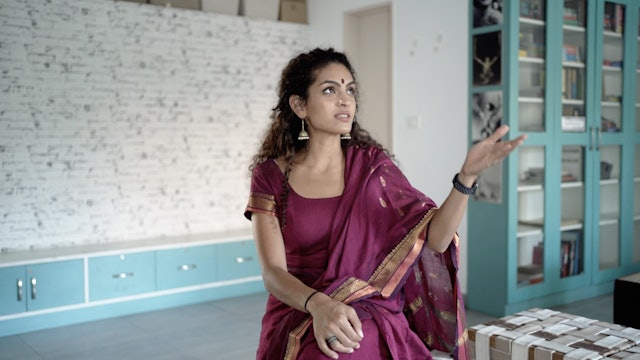-
The complete Raadha Kalpa Warm Up: Level 2
This Warm- up adds a few more variations to the previously introduced warm-up and expects that your strength has progressed, so please make certain that you have practised the following though the past months, atleast 5 times each, slowly with awareness before doing this warm-up.
Legs and core 1...
-
Musical Series: Gluteals 1
This sequence of exercises reinforces ideas that have already been introduced in the previous instructed series for the Gluteals, the stability muscles in the leg/hips. It is recommended to start on the musical series only once you have practised the instructed series over several months, so you ...
-
Jaar Adavu/ Sarikal Adavu
The adavus in this category span a variety of feet articulations. The slide sometime occurs on the whole bottom of the foot. Sometimes in the ball of the foot, and other times on the heel, depending on the choice of the choreographer. These adavus can also vary greatly in levels and leg positions...
-
Jaar Adavu variations: Instructions
'Jaaru', literally means, to slide. This is also called the Sarikal Adavu. In the RK Method, we refer to the standing series that end in Samapada as the Jaar Adavu series and the other sliding Adavus that use Muzhumandi, and Aalidam as Sarikal adavus for simplicity.
This Adavu incorporates the s...
-
Jaar Adavu/ Sarikal Adavu 1
'Jaaru', literally means, to slide. This is also called the Sarikal Adavu. In the RK Method, we refer to the standing series that end in Samapada as the Jaar Adavu series and the other sliding Adavus that use Muzhumandi, and Aalidam as Sarikal adavus for simplicity.
This Adavu incorporates the s...
-
Jaar Adavu/ Sarikal Adavu 2
'Jaaru', literally means, to slide. This is also called the Sarikal Adavu. In the RK Method, we refer to the standing series that end in Samapada as the Jaar Adavu series and the other sliding Adavus that use Muzhumandi, and Aalidam as Sarikal adavus for simplicity.
This Adavu incorporates the ...
-
Jaar Adavu/ Sarikal Adavu 3
'Jaaru', literally means, to slide. This is also called the Sarikal Adavu. In the RK Method, we refer to the standing series that end in Samapada as the Jaar Adavu series and the other sliding Adavus that use Muzhumandi, and Aalidam as Sarikal adavus for simplicity.
This Adavu incorporates the s...
-
Serikal Adavu Variations : Instructions
"Serikal", means to slide. This series of Adavus include a variety of sliding movements in the Adavu series of The Raadha Kalpa Method. The first variety is introduced in this series. Technically 'Jaaru' and 'Serikal' mean the same thing, but we will call this second series of sliding Adavus as '...
-
Serikal Adavu
"Serikal", means to slide. This series of Adavus include a variety of sliding movements in the Adavu series of The Raadha Kalpa Method. The first variety is introduced in this series. Technically 'Jaaru' and 'Serikal' mean the same thing, but we will call this second series of sliding Adavus as '...
-
Serikal Adavu Variation 2 : Instructions
"Serikal", means to slide. This series of Adavus include a variety of sliding movements in the Adavu series of The Raadha Kalpa Method. The first variety is introduced in this series. Technically 'Jaaru' and 'Serikal' mean the same thing, but we will call this second series of sliding Adavus as '...
-
Serikal Adavu Variations
"Serikal", means to slide. This series of Adavus include a variety of sliding movements in the Adavu series of The Raadha Kalpa Method. The first variety is introduced in this series. Technically 'Jaaru' and 'Serikal' mean the same thing, but we will call this second series of sliding Adavus as '...
-
Serikal Adavu Variation 2
"Serikal", means to slide. This series of Adavus include a variety of sliding movements in the Adavu series of The Raadha Kalpa Method. The first variety is introduced in this series. Technically 'Jaaru' and 'Serikal' mean the same thing, but we will call this second series of sliding Adavus as '...
-
Bramari Adavu
Bramari literally means to turn. The first Bramari adavu is introduced in the second set of Adavus, the other varieties will be introduced subsequently. It is important to keep the eyes focussed at a particular point and turn the head faster than the body.
Things to keep in mind:
- When stretc... -
Bramari Adavu 2
Bramari literally means to turn. The second Bramari adavu that we practise in the Raadha Kalpa method introduces, quarter, half and full turns.
These turns are used in choreography to change direction with precision.
Things to keep in mind:
- The lengthening of the bent knee and the turn happ... -
Bramari Adavu 3
Bramari literally means to turn. The third Bramari adavu that we practise in the Raadha Kalpa method introduces half turns while using the same technique as the previous Bramari.
These turns are used in choreography to change direction with precision.
Things to keep in mind:
- The lengthening o... -
Bramari Adavu 4
Bramari literally means to turn. The fourth Bramari adavu that we practise in the Raadha Kalpa method introduces full turns while using the same technique as the third Bramari adavu.
The arm movement is varied in this turn just so students can practise a different combination of upper an lower ...
-
Bramari Adavu 5
Bramari literally means to turn. The fifth Bramari adavu that we practise in the Raadha Kalpa method introduces full turns while changing the technique of the turn.
The arm movement is like the first Bramari Adavu, and the leg movement incorporates a swivel.
This Adavu is usually not done in v...
-
Jatiswaram: Raga Rasikapriya
The second piece that is traditionally presented in a Margam is a Jatiswaram. A Jatiswaram is named as such because it is a combination of a Jathis and Swarams. It begins with a Jathi typically followed by the Pallavi, Anupallai and Charanams, to which multiple Korwes are choreographed.
This pa...
-
Tillana: Raga Vallachi
Tillana
Raga : Vallachi
Adi Tala
Composer: Dwaraki Krishnaswamy
Choreography: Guru Narmada, (reinterpreted by Rukmini Vijayakumar)A Tillana is usually the last piece in the performance of a Margam. Adapted from the Tarana, of Hindustani music, the Tillana reflects the joy of finally reaching th...
-
Vandeham Sharadam
Vandeham Sharadam
Raga: Yamuna Kalyani
Mishra Chapu
Composer: Swami Dayananda Saraswati
Choreography: Rukmini Vijayakumar
Language: SanskritIt describes Goddess Saraswati, the embodiment of knowledge, speaking of how the knowledge of the self is revealed to those who have clarity of thought, a...
-
Flexibility: Ankles and calf muscles
Mobility and flexibility in ankles are very important for a lot of movements in bharatanatyam. When there is tightness in the ankles, it may lead to injuries in the knees and hips. This video helps promote mobility in the ankles and calf muscles and must be practised after dancing or training, no...
-
Varnam, "Adi Shivane" : Introduction
Varnam, "Adi Shivane"
Raga: Todi
Adi Tala
Composer: K.N.Dandayudapani Pillai.
Choreography: Guru Narmada (Jathis) , Adapted by Rukmini Vijayakumar
Language: TamilThe Varnam speaks from the perspective of a Nayika that is longing to see Lord Shiva.
This introduction will go through the meani...
-
Expression Series 8: Sātvika Abhinaya
The four means or tools of expression and communication that we use on stage are , Āngika, Vāchika, Āharya and Sātvika Abhinayas. These lectures will delve into each of these and explain them in detail.
